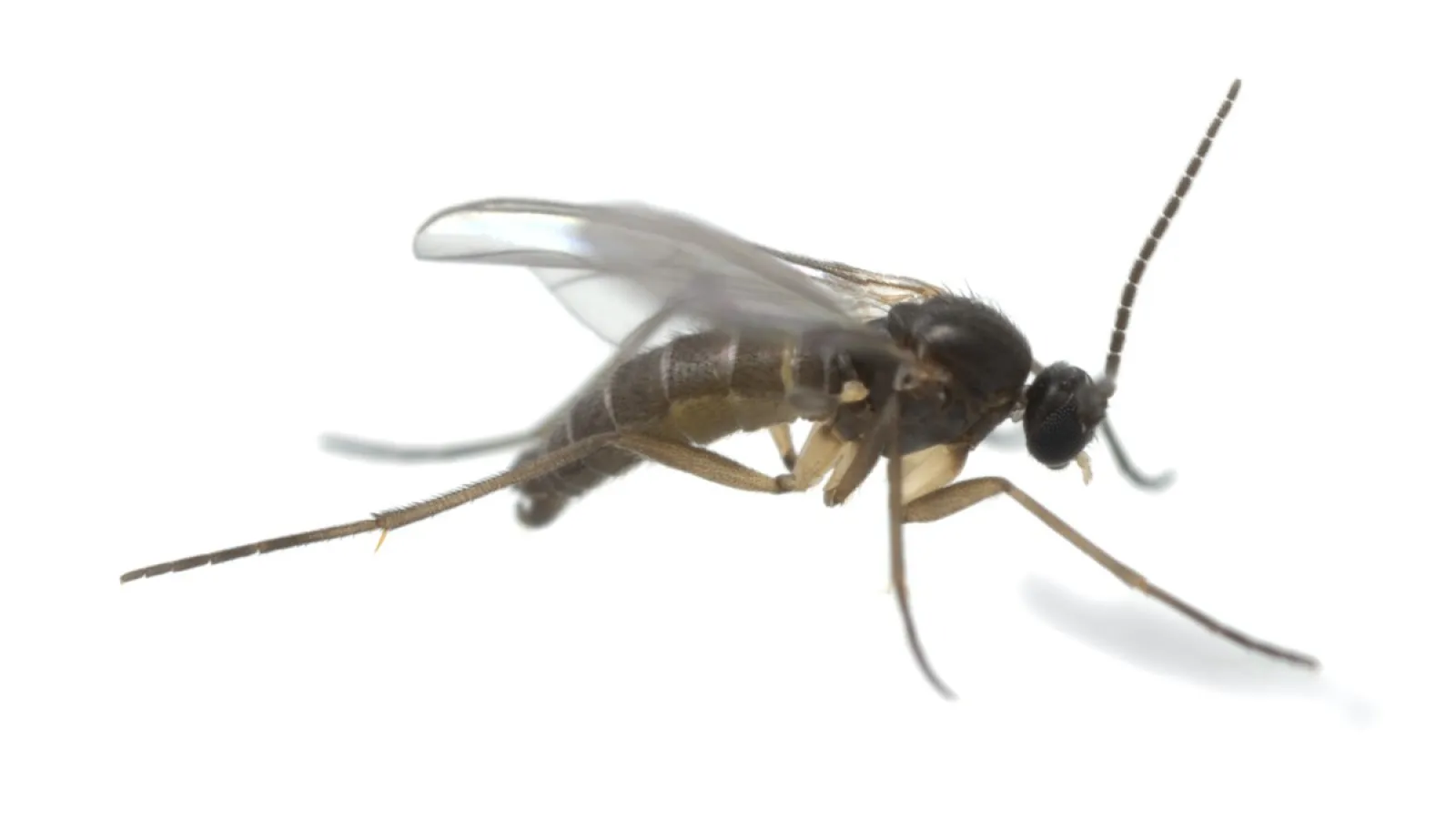
Fungus Gnats`
Latin Name: Lycoriella spp.
What Do Fungus Gnats Look Like?
Fungus gnats are dark, winged insects that are similar in appearance to mosquitoes; however, they are much smaller in size. They typically only grow 2 to 8 millimeters long, with dark gray or black bodies, long legs, and long antennae. Fungus gnats can be identified by their distinctive y-shaped pattern on their wings. Difficulties identifying these pests can be resolved with a pest inspection by a trained exterminator.
Life Cycle of a Fungus Gnat
The fungus gnats develop through four life stages: egg, larvae, pupa, and adult. A fungus gnat's lifespan depends on the temperature, but the insect typically lives 4-6 weeks from when it hatches. They only spend about 3-10 days in the adult stage of life. The fungus gnat eggs are planted in damp, dark areas of organic debris.
Fungus Gnats' Behavior
Once hatched, the larvae feed on fungi in the soil, aiding in decomposition. If the fungi in the soil should run out, the larvae will begin to feed on plant roots, stunting the plant's growth and causing leaves to die and fall off. Fungus gnats are known to be weak fliers but can move swiftly across surfaces. If these gnats become a nuisance in your home, an exterminator can develop a plan to neutralize the infestation.
Are Fungus Gnats Dangerous?
Natural predators and weather changes usually regulate potential damage to household gardens and are typically not severe. However, these gnats are known to damage commercial crops and have been credited for carrying several plant pathogens. If you suspect your commercial crops have been infested with fungus gnats, we recommend consulting a commercial pest control expert like Palmetto to prevent further damage. While adult fungus gnats consume only nectar and water, they can still transmit pathogens as they land on plants.
Fungus gnats are primarily a nuisance pest, as they cause little to no property damage and aid in decomposing organic matter. They do not bite animals or humans and are not known to carry any human pathogens. However, they are known to travel in large quantities and can be disturbing as they swarm around people.
How to Get Rid of Fungus Gnats
If you have a fungus gnat problem, don't bring infested plants and pots indoors. Since larvae and eggs thrive in a moist environment, to control further hatching and development, allow plants to dry out as much as possible in between waterings. Create well-ventilated floors and spaces in your greenhouse.
Clean up dead plants and other decomposing organic materials, as these will provide an ideal environment for further development. Sprays containing pyrethrins can control the pests and should be used daily for two weeks to reduce the population and prevent the adults, who will emerge almost daily. As long as they aren't causing damage to your home or garden, fungus gnats can be left alone with the weather and natural seasonal changes, resolving the problem over time.
If fungus gnats are a bothersome pest in your home, contact our skilled pest control experts at Palmetto Exterminators to learn more information or receive your pest inspection.
Similar Pests: Fruit Flies, Housefly, Mosquito